Mammals
Mammals are warm blooded (endothermic) animals with hair. They give birth to live young and mothers feed their babies milk.
The Jordan River is home to mammals big and small. Meet some of the mammals you might see along the Jordan River below!
-
Rodents
Rodents such as mice, voles, and gophers have the greatest ecological impact along the Jordan River corridor due to their large numbers. Semi-aquatic rodents such as beavers and muskrats influence the river bank through their feeding habits and burrows in the banks.
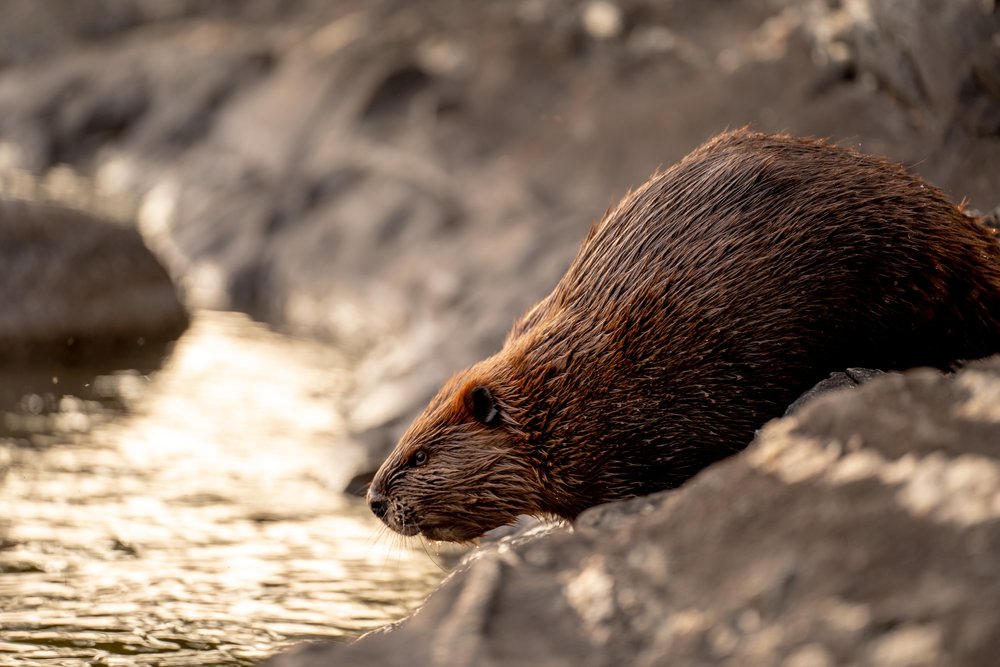
A beaver looks into the water American Beaver (Castor canadensis)
Typically beavers build dams for shelter. However, along the Jordan River, beavers will build burrows along the bank of the river. These burrows still make an impact on the ecosystem; beavers create wetlands, slow down erosion, and improve water quality!
Beavers along the Jordan River are also partners in conservation. Tracy Aviary and the Jordan River Commission has wrapped native trees, such as cottonwood trees, to help encourage beavers to chew on invasive trees instead!
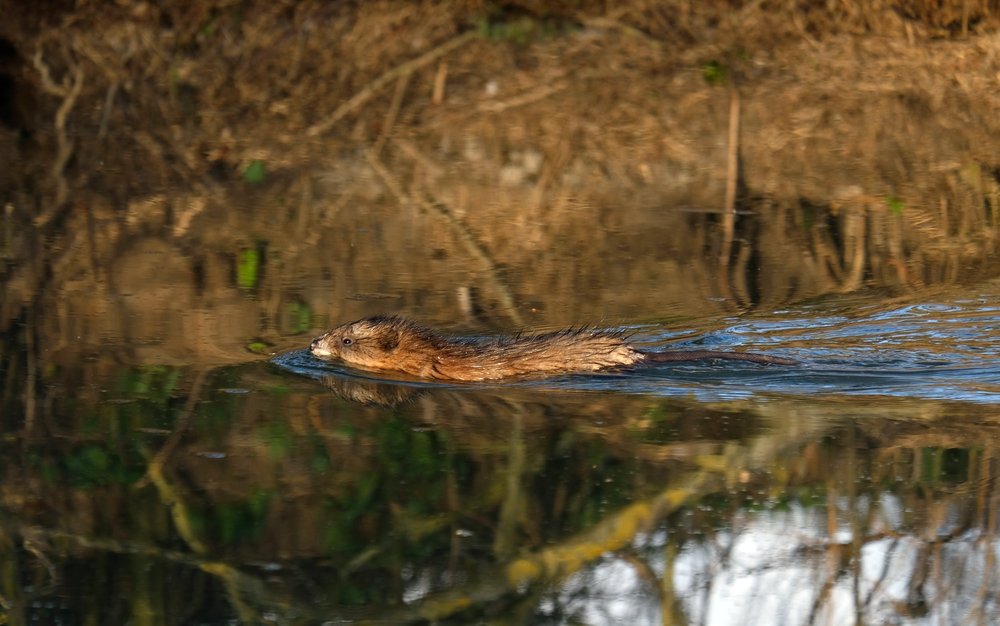
Muskrat swims in a river Common Muskrat (Ondatra zibethicus)
Similar to beavers, muskrats are semiaquatic rodents that are built for swimming. These medium-sized rodents have webbed feet, thick fur, and the ability to stay underwater for up to 20 minutes!
At first glance muskrats might be mistaken for a beaver, however beavers are much larger. Muskrats have thin rat-like tails and swim with their head, back, and tail exposed. A beaver will only swim with its head out of water.
-
Bats
Bats are the only mammals capable of sustained flight. They are the second largest order of mammals, after rodents, making up about 20% of mammal species worldwide!
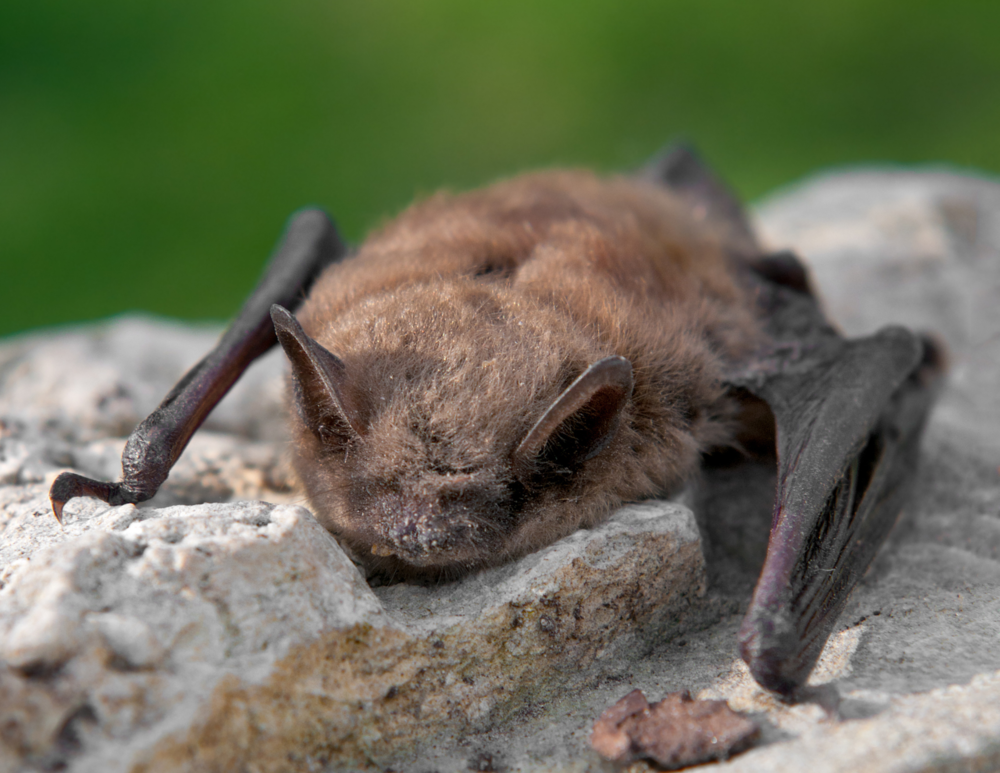
A bat rests on a rock Little Brown Bat (Myotis lucifugus)
Little Brown Bats use echolocation to detect prey and objects. Additionally, they may use echolocation calls, visual cues, such as landmarks, and possibly chemical cues to locate roosts.
These bat use the Jordan River as foraging grounds, as many aquatic insects remain close to the water. Bats are extremely helpful in controlling insect population. Just one bat can eat around 6,000 insects per night!
-
Small Omnivores
An omnivore eats both meat and vegetation. These animals are usually opportunistic and will eat whatever is available. This adaptation allows these mammals to be able to survive in a variety of situations along the Jordan River.
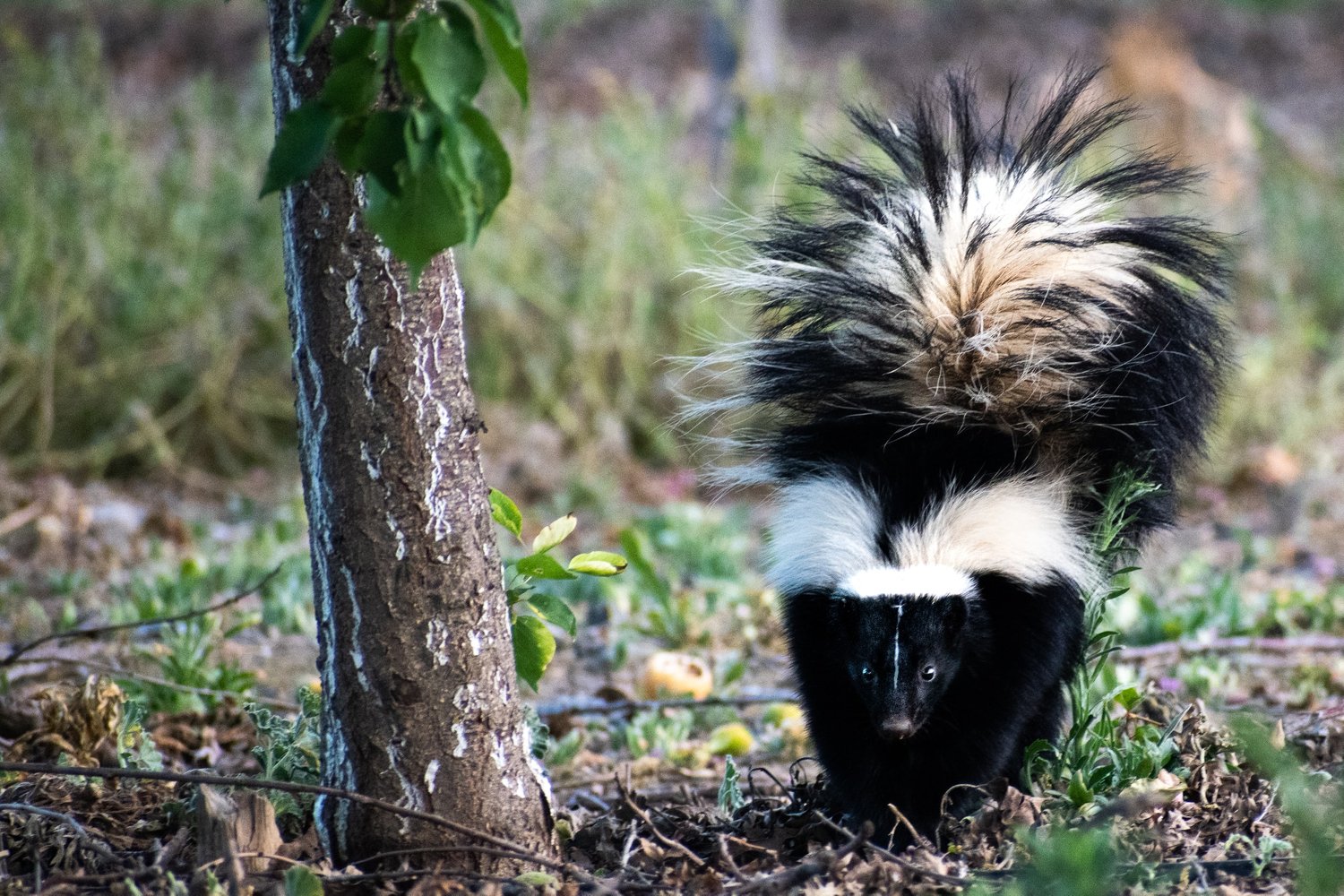
Skunk trots by a tree Striped Skunk (Mephitis mephitis)
Perhaps most well-known for their defense mechanism, striped skunks will secrete a foul-smelling, oily, yellow musk from their scent glands. This musk can spray up to 15 feet!
The striped skunk is solitary and nocturnal. When they come out of their den at night, they will stay close to home. They prefer underground dens in the colder winter months. While not truly hibernating, striped skunks experience extended periods of inactivity during winter.
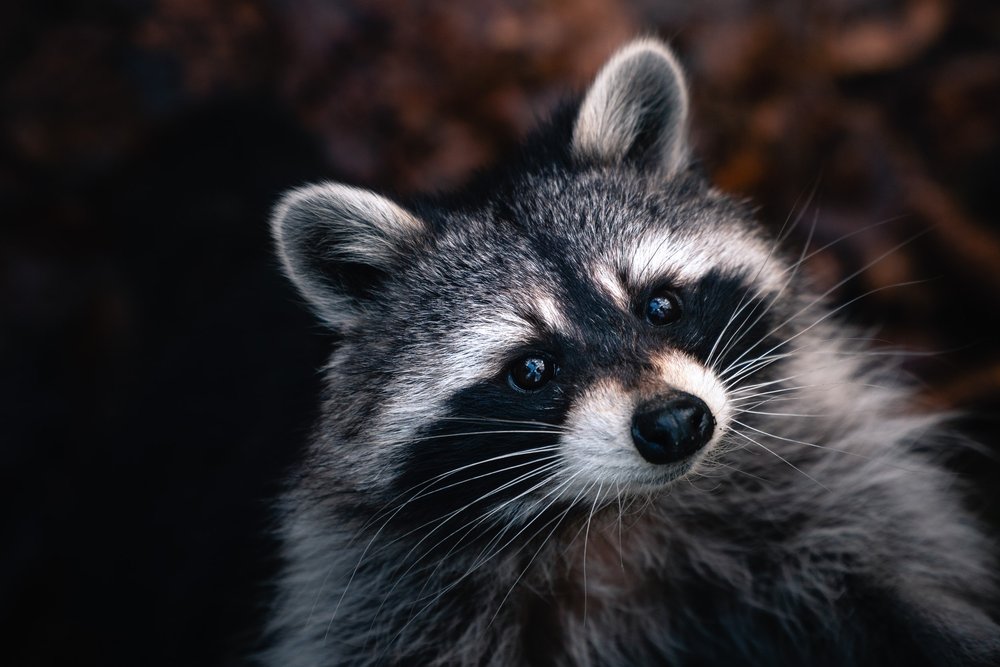
Racoon looks up curiously Racoon (Procyon lotor)
Racoons are not native to Utah, but they are now common throughout the state. These nocturnal animals are opportunistic feeders and have adapted to include trash and other food available in suburban and urban areas in their diet.
Raccoons have a highly developed tactile sense. Their front paws enable the raccoon to handle and pry open prey and climb with ease. Their latin name, lotor, means “the washer.” Often racoons will wash their food in bodies of water before eating.
-
Canids
Canids are dog-like carnivores that include dogs, wolves, foxes, and coyotes. Canids are separate from felines. In Utah there are only three species of wild cats- cougars, lynx, and bobcats, and all are generally more elusive than canids. Along the Jordan River you might encounter the following canids.
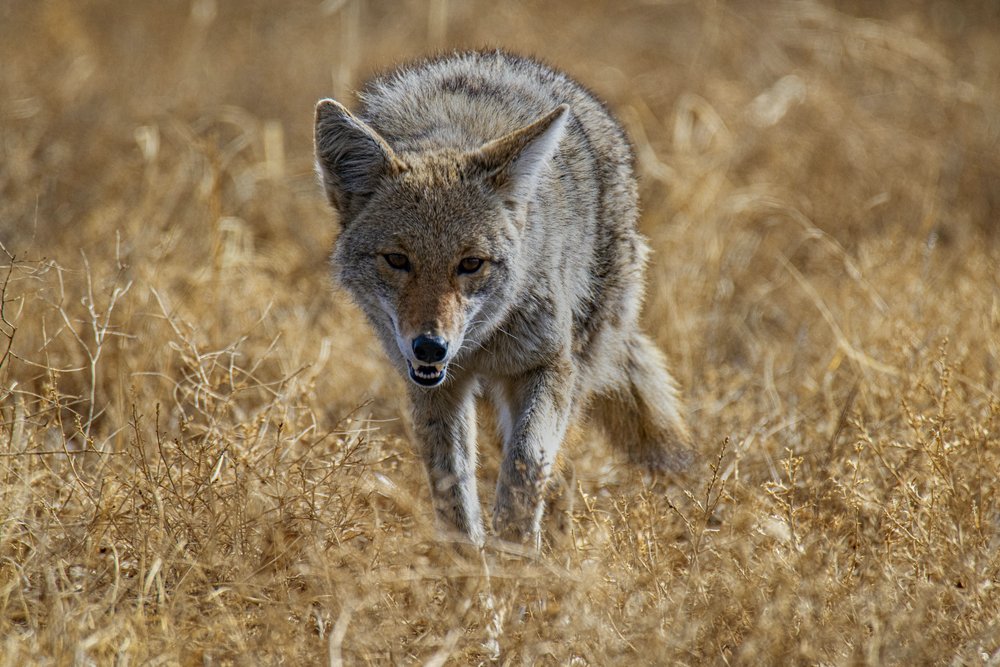
Coyote walks through tall grass Coyote (Canis latrans)
Coyotes are different from wolves in that they are smaller, solitary, and hunt smaller mammals. Coyotes stand about 2 feet tall, and weigh about 40 pounds. They do not hunt in packs. They primarily eat small mammals, and use a hunting technique called “mousing.” They will listen for small rodents traveling underground, figure out their location, and pounce on them! Coyotes are important predators that keep the rodent populations under control.
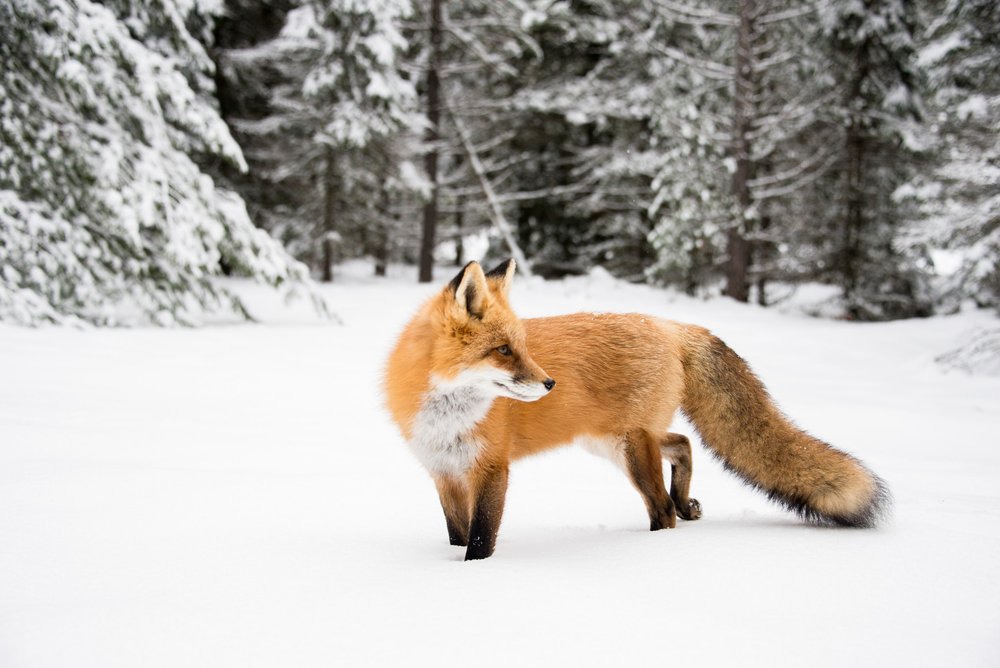
Fox stands in the snow Red Fox (Vulpes vulpes)
Red foxes use a variety of methods to communicate. They use facial expressions and scent marking extensively. Scent marking is through urine, feces, and glandular expression. Red foxes also communicate through vocalization. It is believed that they can make approximately 30 different kinds of vocalizations.
While the color red is in their name, these foxes can range from brown to black. A red fox can be distinguished from other fox species by the characteristic white tip on the end of its tail.
-
Deer
True deer are all part of the Cervidae family. These animals have antlers and specialized teeth for browsing on plant material.
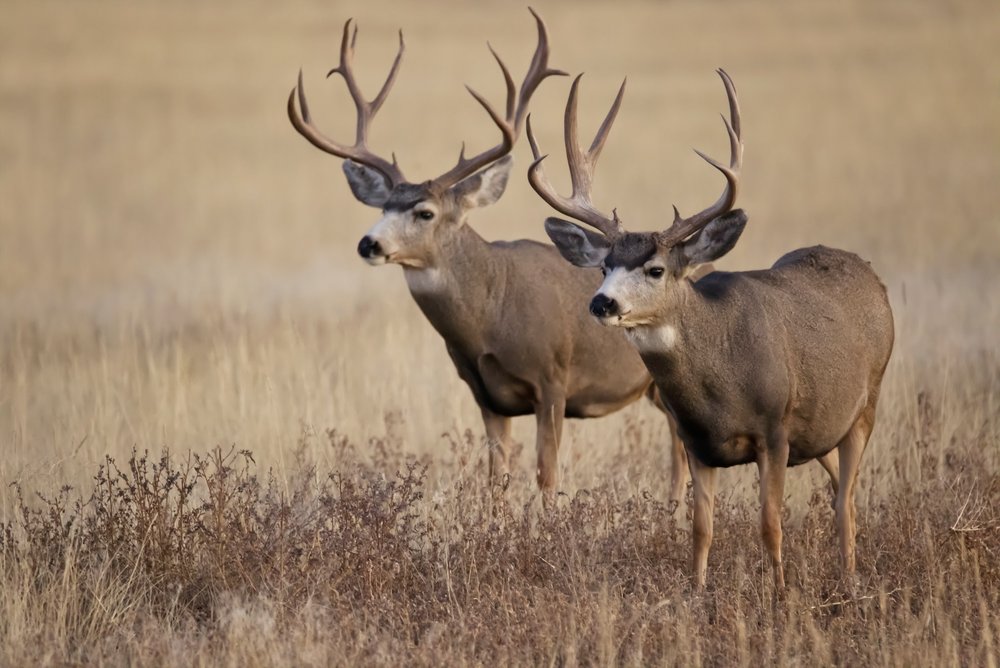
Two mule deer stand in a field Mule Deer (Odocoileus hemionus)
Most mule deer use the same winter and summer home ranges year after year. Seasonal movements involve migrating from higher summer elevations to lower winter ranges. These movements are associated with change in temperature.
These deer browses leaves and twigs of trees and shrubs. They also might eat acorns, legume seeds, and fleshy fruits, including berries.